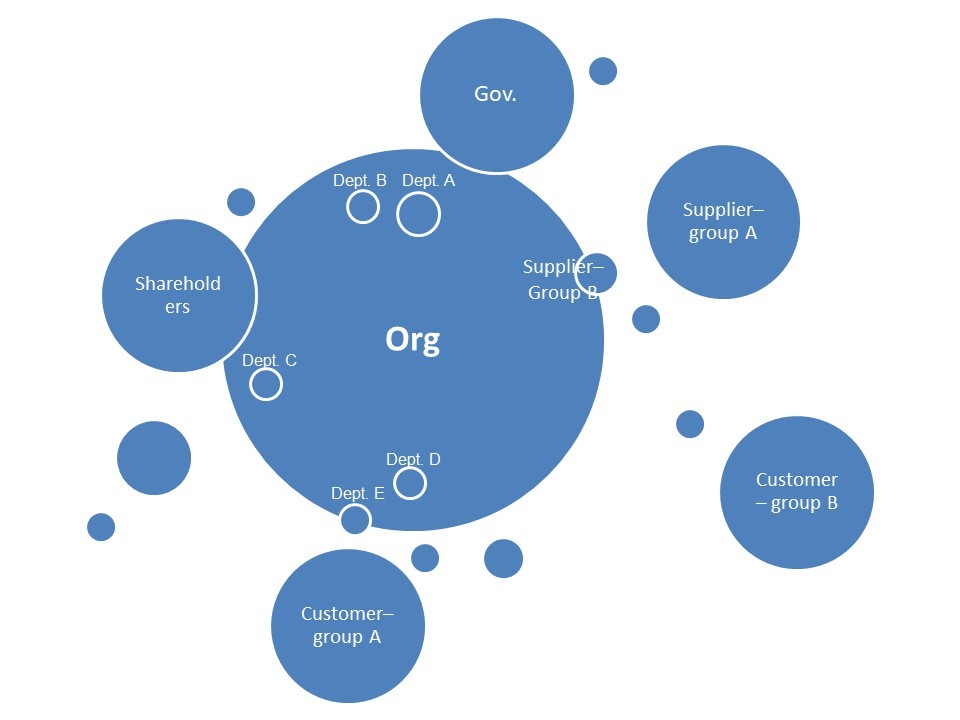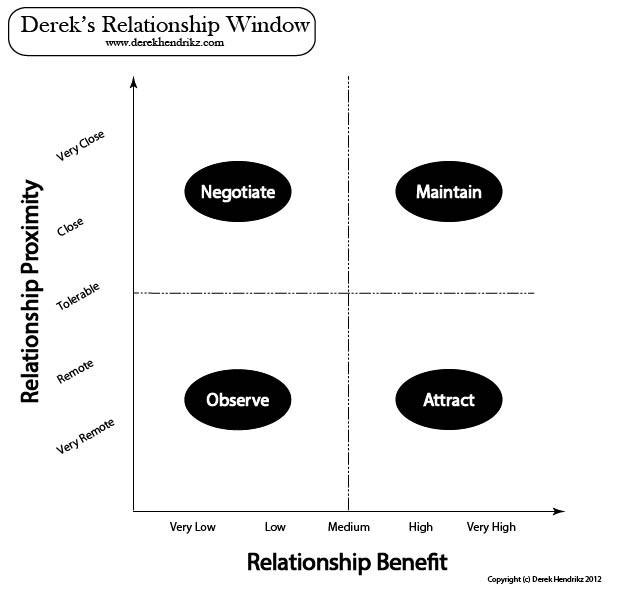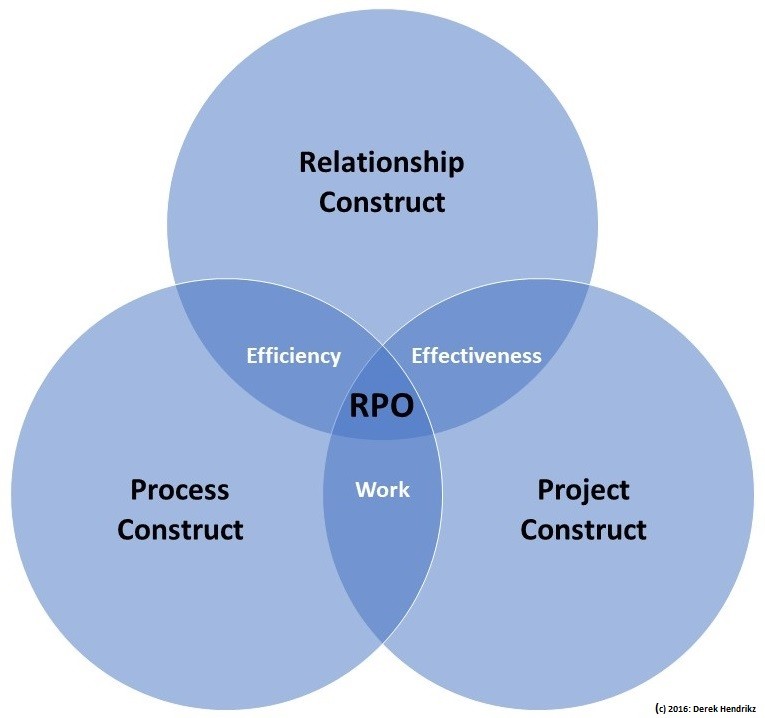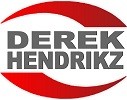The Orgtology Blog
What is a Relationship Construct?
We engage in relationships to benefit ourselves. It could be for resources; psychological wellbeing; need to procreate; sense of duty; etc. The benefits of a relationship could be a myriad of things. Yet, in absence of "the self", there is no relationship.
Org has many relationships too. E.g., with employees, customers, suppliers, competitors, owners, communities, etc. Org does not know that it is an entity. In so, the humans who manage Org, define its relationships. The effect is that emotion and beliefs often riddle the relationships of Org.
The basic assumption on a relationship construct
In relationships, Org will always negotiate the most favourable position for itself since that would be the most intelligent thing to do.
If relationships benefit us, then there is a relationship ranking order. This could be conscious or unconscious. We rank things and people to prioritise. E.g., you might want to spend more time with your children than with your neighbour. That is a priority ranking. Therefore, all relationships are not equal.
If relationships have a ranking order, then proximity will show the relationship strength. This is because any entity will keep important relationships close. At the same time, less important relationships will drift further away.
"Keep your friends close and your enemies closer."
by Mario Puzo – The Godfather
Relationship vs. Relation
A relationship needs reciprocity. Orgtology's Hypothesis 2x defines reciprocity as the continuous interaction between projective and receptive forces. E.g., during a conversation one person might receive ideas that another projects.
Unlike that, a relation is a proximity. This could be a physical location or position within a hierarchy. E.g., being 3 meters away from a cliff or having a nephew, both show a relation. Yet, gravity has no relationship with me. I need gravity, but gravity does not need me. There is no reciprocity in the relation. Also, I am related to my nephew, but that does not mean we have a good relationship.
All relationships imply a relation, but the reverse is not true. In Org, an organogram shows a relation that implies relationships. The same goes for all the stakeholders of Org.
The Nash equilibrium
All game theorists know the Nash equilibrium. It is a relationship "sweet spot". In this, no participant can gain by a unilateral change of position. That is on condition that the positions of the others stay unchanged. Of course, each party must know the equilibrium strategies of all other parties. In so, each party will negotiate a benefit in relation to the benefit of all other parties.
E.g., Jim donates 100$ to Susan and Pete, but Susan must divide the money and Pete must accept the division. If Pete refuses the division, both get nothing. Each person will want maximum benefit. It thus makes sense that Susan takes 99$ and that Pete gets 1$. Pete has no claim to this dollar, so he is getting more than what he had before. Yet, similar experiments show that most people will not accept the dollar. They would rather lose it. Most would feel cheated and see the situation as unfair.
Of course, they have no claim to anything. The money was a donation. This is what Org will have to deal with within its relationship construct. Relationships only partly function within the rules of logic. In so, if Susan was intelligent, she would offer an amount which Pete was not willing to lose. That would give her the maximum profit that she was able to make.
From an orgtology perspective, Susan is the X-Factor. There are three parties here. Jim, Susan, and Pete. The outcome of this scenario depends on her decision. Both Jim and Pete must be receptive to that.
The shape of a relationship construct
An organogram or organisational chart are parts of a relationship construct. We can link people and departments because we can map them in such way. Unfortunately, employees are the only stakeholders that Org can control. When you are dependent on an entity, but cannot control it, your only choice is to negotiate. This will be the case for as long as the relationship lasts. In so, a relationship construct is less predictable than the project- and process- constructs.
When depicting an organogram, one will use a diagram to show the proximity of entities. With the project and process constructs, any change goes through an approval process. Org can control that. Yet, that is just a small part of Org's relationship construct. Most of Org's relationships can change in an instant. In so, Org cannot have a permanent diagram for this. Especially not one that needs any form of approval. E.g., customers can decide to leave at any time, shareholders can withdraw at any moment, etc. Therefore, a relationship construct is difficult to depict. Below is an attempt at this.
Internal vs. External
We depict the internal construct of Org through a process construct. It shows a network of activity flow and resource consumption. It is the anatomy of Org. We depict the change that Org must go through to stay relevant though a project construct. These constructs are mathematical and predictable. We can automate them, and we can run them in a precise way.
The relationship construct is more abstract and complex. It can change in an instant. Yet, there is a greater complexity. As organisations migrate to cyber space, the network of relationships will become impossible to categorise as "internal" and "external".
Currently we use organigrams to depict the internal functioning of Org. This method is becoming outdated. An organogram can simply not depict the complexity that Org will need to survive an increasingly uncertain future. Its application is too limited to survive a complex world. E.g., Recruitment-, procurement-, and budgeting units all have the same task. They acquire resources for Org. Therefore, they all work within the same process. How would one depict that in an organogram?
As the world increases in complexity, it will be quite hard to draw the line between internal and external relationships. The boundaries will simply be to blurred for that.
The mechanics of a relationship construct
A relationship infers the reciprocal satisfaction of needs. To create such a reciprocal order, Org must be purposeful to a community. In so, a community must be able to sponsor the existence of Org. A best-case scenario is where a community needs Org as much as Org needs them.
There is a simple formula that helps Org to work with its relationships. In this formula, we relate benefit to proximity. Benefit is the value that a relationship adds to Org. Proximity is the strength of a relationship – "Is it close, or reserved?" When we grasp the benefit and proximity ratio of our relationships, we can deal with them.
This is how the model works…
- If a relationship is not beneficial or close, then "observe". This will alert you to when it becomes beneficial or close.
- If a relationship is beneficial but not close, then "attract" so that you can get closer. This will make the other party interested in you, at which point you can negotiate more. The aim is to make the relationship both beneficial and close.
- If a relationship is close but not beneficial, then "negotiate" so that you can get more benefit. As with the earlier point, it will make the relationship both close and beneficial.
- If the relationship is both beneficial and close, then "maintain". At this point Org has what it wants and needs. Such reciprocity creates a relationship "sweet spot".
One can apply the model in several ways. Most organisations already have the infrastructure. E.g., in a "for-profit" business, one can deal with each dimension as follows:
- Negotiate through sales.
- Maintain through Customer Relationship Management (CRM).
- Attract through marketing.
Integrating the three constructs
A relationship construct makes things real. You know that you are real because you can breathe and talk to others. An entity exists because of relations and relationships. The task of a relationship construct is thus to empower and influence relationships.
A relationship construct defines both, efficiency, and effectiveness. The resources that the processes of Org use, will depend on what its stakeholders want. In so, relationships decide the efficiency of Org. Whether Org does relevant things, is an assessment that its stakeholders will make. In so, relationships also decide the effectiveness of Org. Where the relationship- and process- constructs intertwine, Org defines its efficiency. Where the relationship- and project- constructs intertwine, Org defines its effectiveness.
All work either repeats or stops, thus it is either a process or a project. The process- and project- constructs of Org defines its work. It creates the activity that consumes resources so that it can produce results.
The relationship construct of Org has the task to make its work meaningful. There is no point in operations or strategy if its results are not meaningful. Without relationships, Org has no meaning. Without a relationship construct, Org has little control over that which gives it meaning.
Jointly, the three constructs of Org, creates the Relevant and Performing Organisation (RPO).
Conclusion
All living things base their relationships on assumptions. Where those assumptions change, the relationship will follow suit.
In Greek mythology there was a famous hunter called Actaeon. He always hunted with his devoted hounds. His hounds had names and they loved him. One day, whilst in the woods, he stumbled across the goddess of the hunt, Artemis. She was naked and bathing. Angered by Actaeon's staring, she casted a spell on him. It dictated that if he dared to speak, he would become a deer. Actaeon, confused about what just happened, called for his beloved hounds. This turned him into a deer. In so, his hounds did not recognise him, and tore his flesh to pieces. The moral of the story is this. When assumptions change, the relationship becomes something else.
Org must decide on the proximity and benefit of its relationships. A relationship construct holds assumptions on how close and beneficial relationships should be. This gives an ability to efficiently use resources. In turn, efficiency will enable Org to effectively negotiate its position. This is how leaders will move Org from good to great.
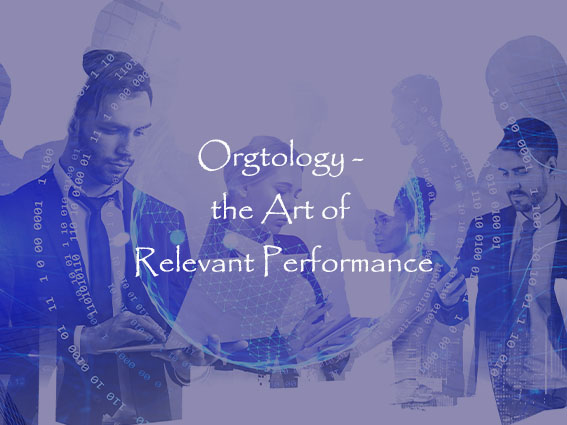
Join the Orgtologist Certification Program (OCP) - Empowering Executive Teams Worldwide
Copyright
© 2020-01-18: Derek Hendrikz
When you subscribe to the blog, we will send you an e-mail when there are new updates on the site so you wouldn't miss them.


